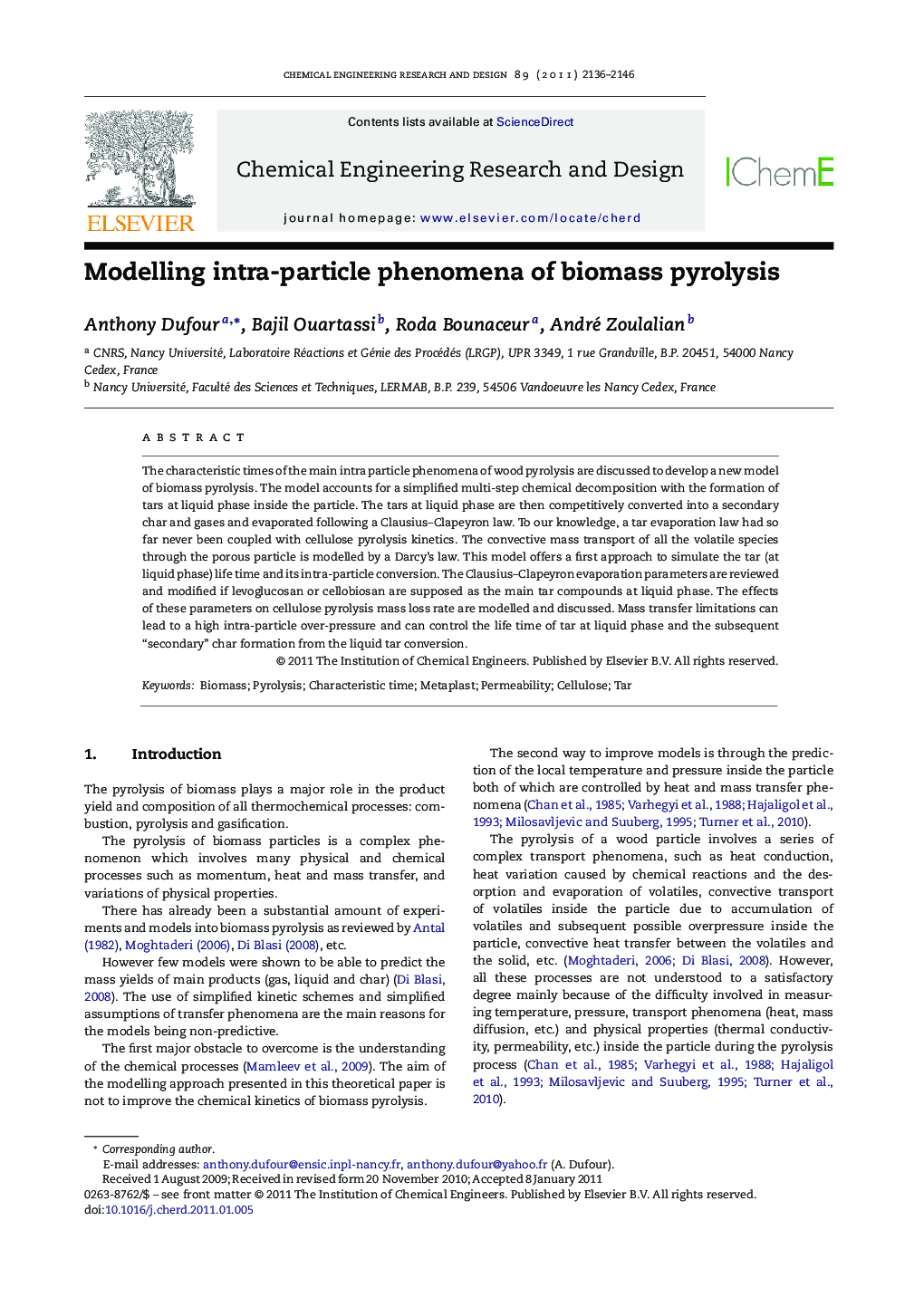| Article ID | Journal | Published Year | Pages | File Type |
|---|---|---|---|---|
| 620832 | Chemical Engineering Research and Design | 2011 | 11 Pages |
The characteristic times of the main intra particle phenomena of wood pyrolysis are discussed to develop a new model of biomass pyrolysis. The model accounts for a simplified multi-step chemical decomposition with the formation of tars at liquid phase inside the particle. The tars at liquid phase are then competitively converted into a secondary char and gases and evaporated following a Clausius–Clapeyron law. To our knowledge, a tar evaporation law had so far never been coupled with cellulose pyrolysis kinetics. The convective mass transport of all the volatile species through the porous particle is modelled by a Darcy's law. This model offers a first approach to simulate the tar (at liquid phase) life time and its intra-particle conversion. The Clausius–Clapeyron evaporation parameters are reviewed and modified if levoglucosan or cellobiosan are supposed as the main tar compounds at liquid phase. The effects of these parameters on cellulose pyrolysis mass loss rate are modelled and discussed. Mass transfer limitations can lead to a high intra-particle over-pressure and can control the life time of tar at liquid phase and the subsequent “secondary” char formation from the liquid tar conversion.
Research highlights► A new model of biomass pyrolysis is developed. ► It is justified by characteristic time analysis. ► It accounts for multi-step kinetics, tar evaporation, volatiles convective escape. ► Tar evaporation laws are reviewed. ► Tar evaporation and convective transport of volatiles can control mass loss rate.
